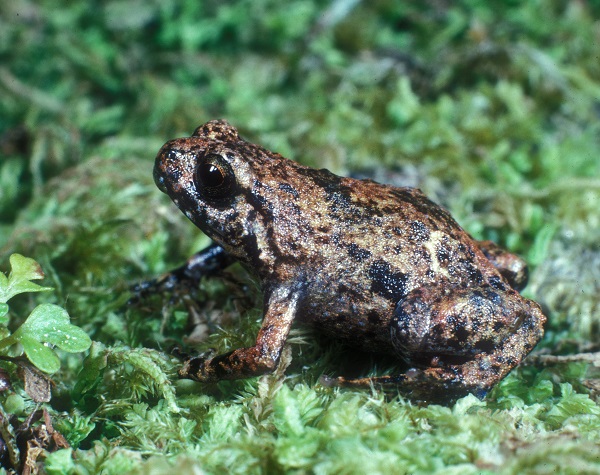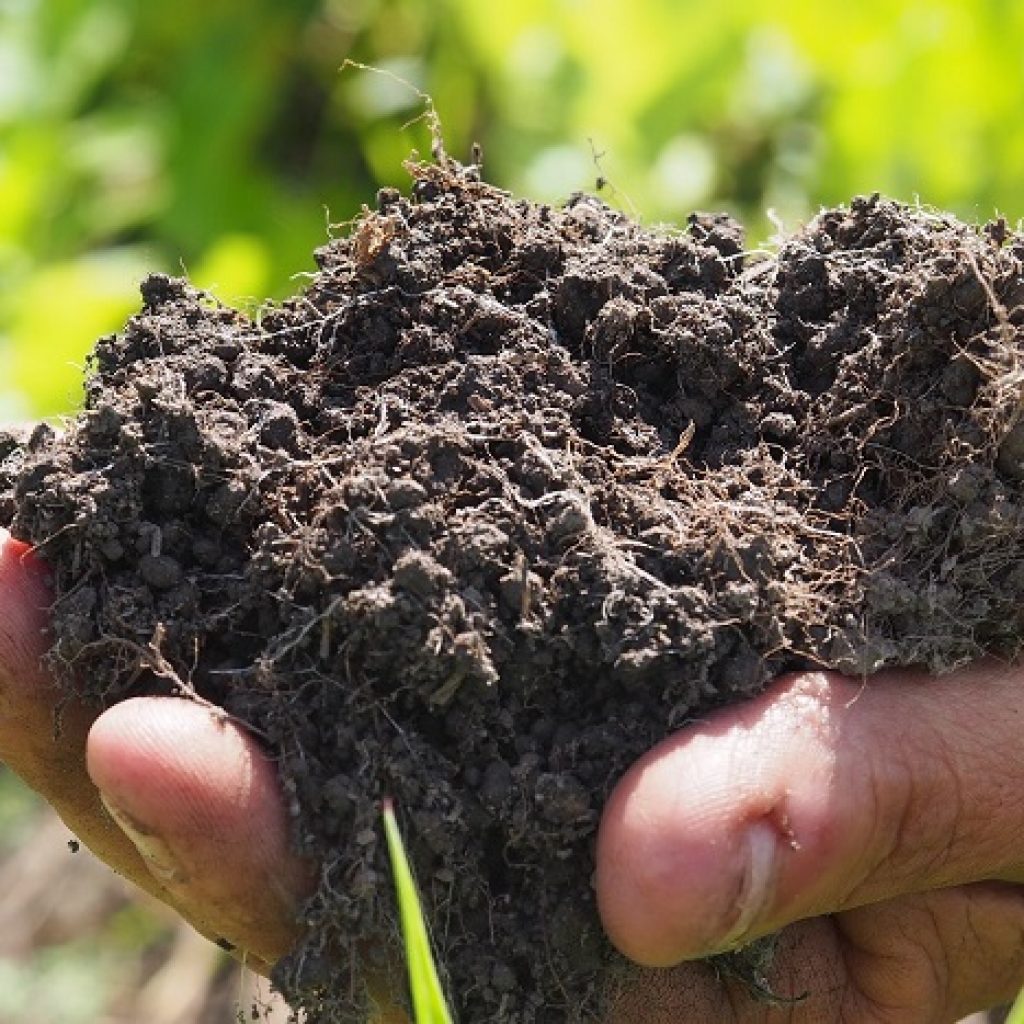MOUNTAIN-TOP NURSERY FROG
HELPING THE MOUNTAIN-TOP NURSERY FROG
AUGUST 2024
Do you want to know more about our new project to reduce threats to the critically-endangeed mountain-top nursery frog? Terrain NRM project leader Dr Andrew Dennis spoke with ABC Far North recently about a project that’ll lead to pig-exclusion fencing around known frog-breeding sites, pig control measures and species monitoring work.
Two thousand square metres of high-altitude rainforest will be fenced off to protect the critically endangered mountain-top nursery frog from feral pigs at Mt Lewis, west of Port Douglas. This frog is one of the most range-restricted on the continent. Terrain NRM is partnering with traditional owners, researchers and other groups on this project and Terrain’s Dr Andrew Dennis is with us to explain how pigs are threatening this frog’s existence at altitudes you wouldn’t expect.
Can you describe what these mountain-top nursery frogs look like…
Well, first of all, they’re tiny. They are about 17mm long – so less than two centimetres in length. They are mottle-coloured, so they blend into the leaf litter really well. The only way you detect them is by hearing the calls of the males. They’ve got a really distinct rattling sort of call that they emit in the wet evenings on those high mountain tops.
They are critically endangered, which means we’re concerned they could become extinct. What makes them so susceptible to extinction?
Firstly, they have a tiny distribution. When they were first found, they were only on a few ridge tops, about 1100m high in the cloud forests – very damp, moist, dripping forests. So that small distribution means anything that happens in that little area could impact the species. Secondly, climate change and global warming are probably the biggest threat. Mountain-top nursery frog breeding sites used to be common at 1100m, but they’re becoming less common there, and they’re more common at 1300m now. As it warms up that little bit, it seems that they might be moving up, but there’s not much we can do immediately on the ground for that. The other thing that’s happening is feral pigs are moving in bigger numbers. Back in the 1990s, a researcher suggested that the pigs might be damaging some of this frog’s habitat and eating some of the adult frogs when they turned logs. In the last five years or so, pig numbers have really exploded and there’s a lot more damage going on in those forests.
We know that pigs are rampant through the lowland rainforest. Why do we think they’re becoming increasingly problematic through the upland or high-altitude rainforest as well?
The evidence is there. Normally when you walk in these high altitude, really wet forests, you’re walking on a spongy mulch of leaf litter and you don’t actually see much soil. But now the pig numbers have got to the point where pigs are turning it all upside-down, and there’s a lot of muddy patches and wallows and broken-up logs where the pigs have pulled them apart looking for beetles and beetle larvae. With a few good wet years up here in the Wet Tropics the pig numbers are increasing everywhere. In the lowlands they’re increasing and they’re also increasing up the mountains. They’re learning to tolerate those colder high-altitude conditions.
In some areas feral pigs are much easier to target and tackle than others. This is pretty inaccessible terrain on Mt Lewis. How will it be done?
It’s dense rainforest and really tricky terrain. We know where the frogs are breeding and where their main breeding sites are because of some work by James Cook University students and lecturer Conrad Hoskins. So we can map the area. But we can’t fence off the whole area that these frogs might breed in. What we are doing is setting up 20 plots. Each one is ten metres by ten metres. For a tiny, less than two-centimetre frog you can actually fit quite a lot of individuals into that space. We are keeping the pigs out of those. And what we’ll have to do is very carefully bring in fencing materials and star pickets and build these fences under the rainforest canopy. The fence has got to keep pigs out but it also needs to allow the native animals to move in and out.

How do you make a fence to keep pigs out but allow the movement of other animals?
There is work being done in other parts of Queensland for freshwater turtles where nests are being dug up by pigs. Pigs have to be excluded from that area while the turtles have to be able to move in and out of the fencing. So little turtle passageways were built into the fences that the turtles could get through but the pigs couldn’t. At Mt Lewis, most of the animals in the high-altitude forest are pretty small and will be able to get through the mesh size that we’ll use. But if we want things like musky rat kangaroos to come and go, we might have to build those little pathways into it for them to move.
If you’re successful with this exclusion fence and the other control measures that you’ll need to take to try and keep the pig numbers down, do you think this can it be applied in other areas where you’re concerned about range restriction and native animals?
Yes, absolutely. The area we are working in actually has five other little nursery frogs. And these nursery frogs lay eggs on land. The eggs hatch directly into tiny frogs – there is no free-swimming tadpole stage. So there are five other species there that can benefit from this. And there are other mountain tops in the Wet Tropics with similar impacts from pigs. We are planning on testing some traps that are activated by a satellite connection. They have cameras and bait dispersers and a door that we can activate from the office to catch the pigs. So if that works, the technology can be put in on any mountain top, even if there’s no mobile reception. And we can still monitor with cameras what the pigs are doing and whether we’ve got some in the trap.
Terrain NRM secured funding through the Australian Government’s Saving Native Species (Priority Species) Grants for this project. Terrain is working with Western Yalanji traditional owners, James Cook University researchers, Gulf Savannah NRM and the Queensland Parks and Wildlife Service. The Mt Lewis access road is currently closed due to bridge damage following Cyclone Jasper and its flooding rains, so commencement of this project has been delayed.
RELATED NEWS
Compost Workshop
 Elaine
Elaine
 June 24, 2024
June 24, 2024
Soilkee Renovator Demonstration Day
 Elaine
Elaine
 May 27, 2024
May 27, 2024
Mulch trials: Which types work best?
 Elaine
Elaine
 February 27, 2024
February 27, 2024






























